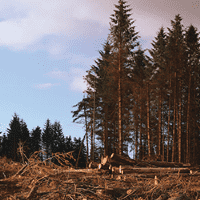There is little doubt that in Scotland the current Government's aspirations put forestry high up the agenda, mainly due to climate change targets, outlined in the Climate Change Plan, as part of the Climate Change (Scotland) Act 2009.
There is also a recognition of the positive contribution that forestry makes to the rural economy, through increased new planting, along with timber harvesting and marketing activity based on the extensive plantings in the 1970s and 1980s.
What is still lacking, however, is a real strategy to support this development and to integrate it with the other land uses which have a stake in rural Scotland. The Scottish Forestry Strategy was produced in 2006 and despite updates is now out of kilter with the new aspirations.
Encouragingly, there is a commitment to the delivery of a new Scottish Forestry Strategy, which is required by the Forestry and Land Management (Scotland) Bill and which will be in place by April 2019.
As momentum for planting builds, so does concern about alternative land-use in traditional stock rearing areas. It is hoped that this new inclusive strategy will go some way to alleviating the apprehension of the agricultural sector in the increasing expansion of forestry planting.
Increase in planting numbers
The outcome of the greater push for forestry in Scotland has resulted in a significant increase in planting figures, and over the past 12 months it is likely some 8,000 hectares of planting will be approved, which is 2,000 hectares up on the previous period.
When taken along with the public sector planting carried out by the Forestry Commission at 900 hectares, we are heading in the right direction to achieve the current target of 10,000 hectares per annum, and, importantly, for the processing sector, this is also close to the target of being 60% productive conifer (see Figure 7).



.png)
.png)
